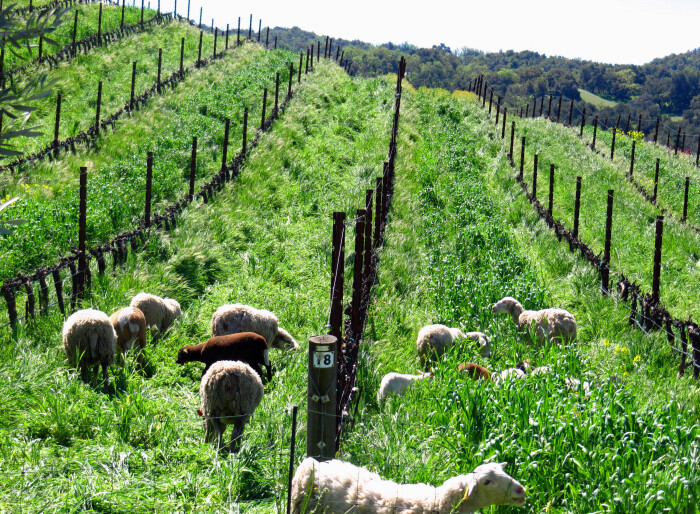SACRAMENTO, April 26, 2022 — By a 7-3 vote, the Natural Carbon Sequestration and Resilience Act (AB 2649) advanced out of the California Assembly Natural Resources Committee on Monday evening. AB 2649 aims to set California’s first-ever statutory targets for naturally removing past climate pollution from the atmosphere through soil and vegetation on natural, urban, and working lands. The bill moves next to the Assembly Appropriations Committee, where it will be heard in May.
“Passing the Natural Carbon Sequestration and Resilience Act is a critical step toward protecting the health of California’s frontline communities,” said Assemblymember Cristina Garcia (D-Bell Gardens). “Unlike technological methods proposed by oil and gas corporations, natural carbon sequestration solutions like urban tree-planting, compost application, and agroforestry are readily available, cost-effective, and environmentally just. In an urban district like mine — which is choked by six freeways and has some of the worst air quality in the state — increasing urban tree canopies can help in our fight against climate change while also helping to alleviate the air pollution and heat island effect that threaten our health.”
AB 2649 was introduced by Assemblymember Cristina Garcia and co-authored by Mark Stone (D-Monterey Bay), and Senator Josh Becker (D-San Mateo). It’s sponsored by The Climate Center and co-sponsored by the Carbon Cycle Institute and the California Association of Resource Conservation Districts.
A recent report from The Climate Center found that California’s working and urban lands have the potential to sequester up to 103 MMT of past climate pollution from the atmosphere per year. Adding sequestration on natural lands and waters, as AB 2649 does, further increases the potential for scalable, cost-effective, natural solutions. The bill sets a goal of sequestering an additional 60 million metric tons (MMT) of carbon dioxide equivalent (CO2e) each year by 2030, increasing to 75 MMT annually by 2035. For comparison, 60 MMT of CO2e is equivalent to the annual greenhouse gas pollution from roughly 13 million passenger vehicles.
“We thank the Assembly Natural Resources Committee for advancing this critical bill and look forward to working with members of the Appropriations Committee to continue moving forward,” said The Climate Center CEO Ellie Cohen. “The Natural Carbon Sequestration and Resilience Act can help California navigate out of several crises at once. Natural carbon sequestration solutions improve water security as we combat prolonged drought, help slow the spread of wildfires, divert food waste from landfills and reduce methane emissions, and can even replace polluting agriculture techniques that endanger farmworkers and nearby communities.”
As affirmed by the latest report from the IPCC, limiting global warming to 1.5 degrees Celsius will require both dramatically cutting emissions and removing upwards of a trillion tons of past climate pollution from the atmosphere. Enacting the Natural Carbon Sequestration and Resilience Act will be essential for California to achieve its current goal of carbon neutrality followed by net-negative emissions by 2045 or sooner.
“The Assembly Natural Resources Committee’s action this week is critical to deepening the state’s leadership on climate change,” said the Carbon Cycle Institute Executive Director Torri Estrada. “AB 2649 identifies the critical actions needed for California to effectively engage our natural and working lands, building resilience to climate change and drought. In doing so, we can create the foundation for long-term economic viability and health in our state.”
Only natural carbon removal can safely and cost-effectively draw down past carbon emissions with multiple co-benefits for our communities and nature. Policymakers sometimes conflate fossil fuel carbon capture and storage (CCS), which operates at the smokestack, with atmospheric carbon removal solutions. Direct air capture is a nascent technological form of carbon removal from the atmosphere that is energy-intensive, expensive, and not yet scalable.
“Implementing conservation on natural and working lands is critical to the climate solution, said California Association of Resource Conservation Districts Executive Director Karen Buhr. “To fully implement, we need to support farmers, ranchers, and the resource conservation districts that provide them with technical assistance, support, and information. This bill is critical in getting that support to the ground so that the work can get done. Thank you to the Assembly Natural Resources Committee for your important decision.”
ENDS
Notes:
The Natural Carbon Sequestration and Resilience Act of 2022 (AB 2649) fact sheet is available here and the full bill language here. A letter of support signed by more than 60 organizations is available here; the letter was sent to the Assembly Natural Resources Committee on April 19, 2022. The Climate Center recently hosted a briefing on natural versus technological carbon removal for reporters, the recording of which is available here. Additional details on the differences between fossil fuel CCS, direct air capture, and nature-based carbon removal are available here. More information on natural carbon removal on working lands and its benefits for California can be found in The Climate Center’s recent report, Setting an Ambitious Sequestration Goal for California’s Working Lands.
Contact: Ryan Schleeter, Communications Director, The Climate Center: ryan@theclimatecenter.org, (415) 342-2386
About The Climate Center:
The Climate Center is a climate and energy policy nonprofit working to rapidly reduce climate pollution at scale, starting in California. Our flagship Climate-Safe California campaign is a unique and comprehensive effort to make California the first state in the nation to reach carbon negative.


